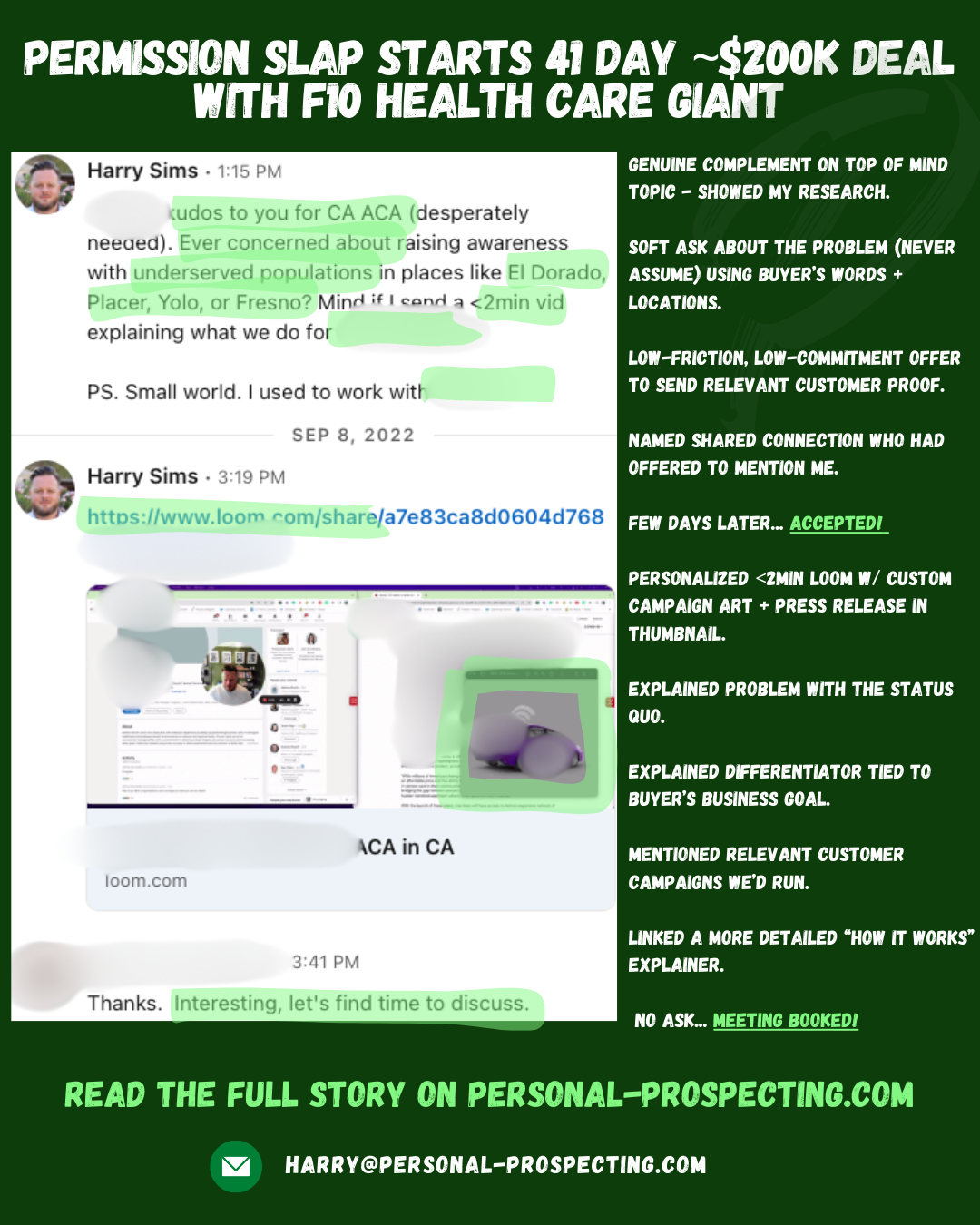Permission Slap starts 41 day ~$200k deal with F10 Health Care Giant
This is the true story of how a permission slap started a ~$200K deal with a F10, $300Bn+ Health Care Giant that closed in 41 days - that’s fast.
This is the true story of how a permission slap started a ~$200K deal with a F10, $300Bn+ Health Care Giant that closed in 41 days - that’s fast. I say started deliberately - I’m not dumb enough to believe the permission slap caused the deal. It was perfect timing and mostly great sales by AE, Ops, and CEO that did it. The permission slap just started the conversation and booked the first meeting with a C-level exec who championed us and was our EB.
Some context. I was 5 months in, building the first SDR team at a tiny struggling Series A in the ad tech/media world. We were way behind on rev targets with no funding in sight. Desperate to prove myself with only ~$70K closed from outbound and just about to hire my first two teammates. The markets had turned and worse, most VC Funded SaaS (my sweet spot) had stopped spending in our weird category. Layoffs happening everywhere. Looking bleak.
So when the CEO suggested I target the Top US Health Insurance Providers - it sounded like a world of pain that I knew nothing about and didn't want any part of. These are complex, in some cases 100K+ employee orgs who had no idea who we were, didn’t buy direct, and didn’t buy fast. We had no brand or demand engine either - this isn’t the SFDC / Gong guy claiming to source all their own deals outbound - it was as cold as it gets.
I warmed up a bit when the CEO told me the segment spends in the run-up to Christmas before the enrollment cut-off in mid-Jan. Our offering allowed providers to target their audience in ways that the status quo wouldn’t. That we’d run similar-ish campaigns years before. Started sounding slightly less painful... then I started building my lists. Each account had at least 25 ATL buyers that fit our criteria. Some had 50. This was going to take a while…
For a week or so the few replies/convos I had were “we’re planned out” or “speak to our agency” - that’s advertising talk for “jog on kid - you ain’t in the club”. The club I'm told involves vendors throwing expensive parties and giving agencies gifts... I'd booked 1 meeting which went nowhere. It was looking like we were too late until I googled the name of a C-level buyer at the biggest, scariest provider on the list...
Top result was a press release from a month or so earlier. They were launching a new product into a new market. The press release named specific Counties and the demo they would be targeting - that's very important in the ad world. It even included quotes from the buyer (the protagonist of this tale) and their business goal. I got tingles reading it - weird I know. I knew we’d get replies - this was all the personalization needed for the whole account. So I got to work - most of the emails bounced - they had an unfriendly format for people like me - bob742@BIGHEALTHINSURANCE.com. Surprise, surprise pick-up up% was 3% ish too.
Then the permission slap:
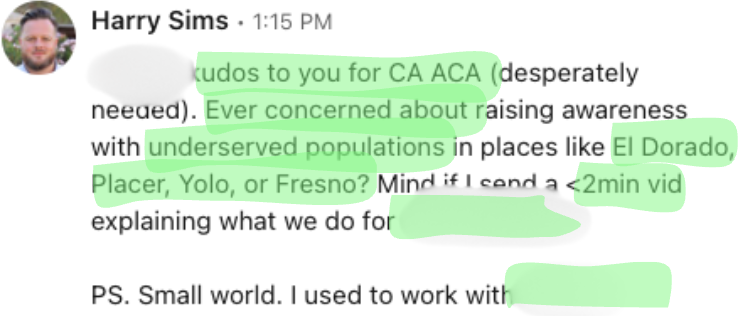
4 pieces of personalization in <300 characters.
- Genuine compliment on the launch. I showed my research, didn't tell - trust me - “I noticed X” is no longer the pattern interrupt you might think it is.
- A soft (“ever concerned”) ask about the problem (never assume) using his words (“underserved”) while naming some of the Counties listed in the press release.
- A low-friction, low-commitment offer to send an explainer on what we do for a similar/relevant customer. I'm simply seeking curiosity here - creating a a gap between what the buyer knows and what they want to know.
- To top it off. I name dropped a shared connection who had offered to mention me to the buyer.
He accepted a few days later. For me - that’s an invite to fulfill the offer but unlike a pitch slap - I don't feel icky about it because I earned your attention and let you know it was coming.
I used custom campaign art with their branding (thank you creative) and the press release as my background for video and the thumbnail. Thinking here is that it encourages the recipient to watch as it’s for them and not generic.
The <2min video covered:
- The problem with the status quo as it relates to his audience and the Counties mentioned.
- Our differentiator tied it back to the business goal he had mentioned in press release.
- Similar campaigns we'd run for others.
- Linked a more "how it works" explainer. Invited him to watch it or share with his team.
I also mentioned the shared connection who by now I knew had mentioned me.
I didn't ask for a meeting but...
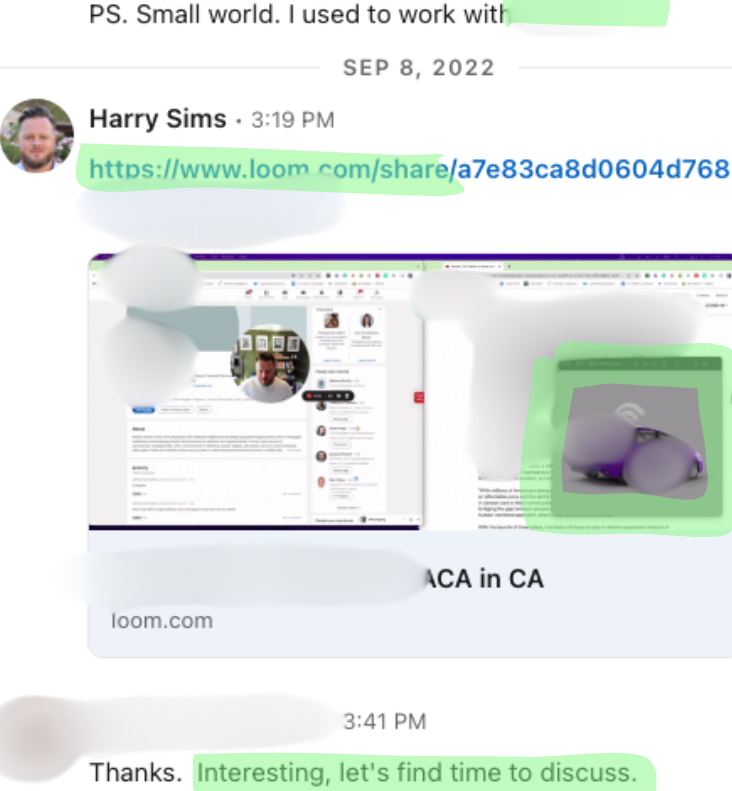
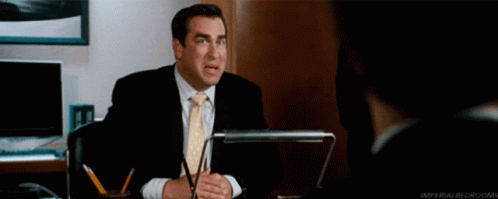
*I still do a POW POW when I book AMAZING meetings. It's been over a decade...
The meeting happened a week or so later and first deal followed 41 days from first response, followed by another a few weeks later. ~$200K in the ad/media world is small but if we delivered it had huge upside. I was laid off with a few others before we ever delivered so I don’t even know if we did deliver and "drive results".
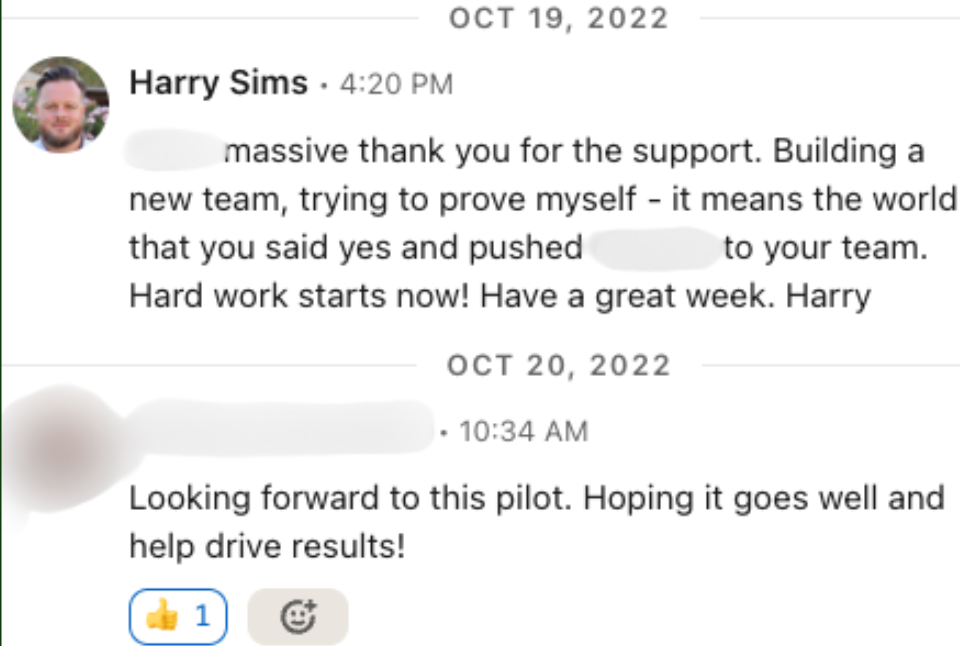
THE END.
